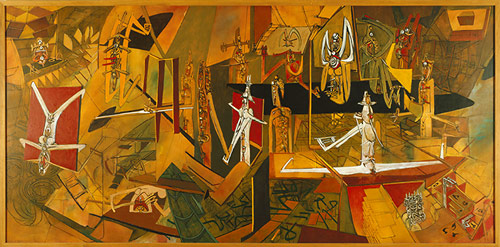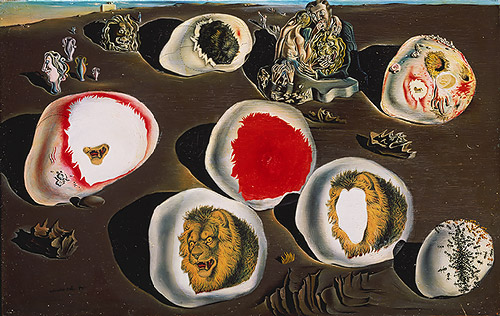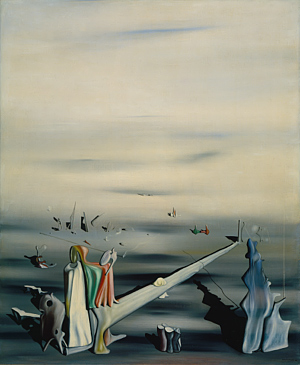Surrealism is a cultural movement closely associated with Dada, they are almost contemporaneous movements. The literary movement called surrealism starts in the 1910s-1920s; it is primarily associated with new forms of writing, automatism, a form of automatic writing designed to release the subconscious. It was initially an intellectual and political movement. Surrealist literature works with the ideas of Karl Marx and Sigmund Freud. Free association is a common technique used to bring the private world into the public realm. Some of the key poets of this movement are Paul Eluard and Louis Aragon. In many ways the energies fostered by Dada created the intellectual space from within which Surrealism emerged.
Andre Breton’s A Manifesto of Surrealism (1925) served as the touchstone for the artistic movements that followed. The aim was to “resolve the previously contradictory conditions of dream and reality.” Artists painted unnerving, illogical scenes with photographic precision, created strange creatures from everyday objects and developed painting techniques that allowed the unconscious to express itself. Surrealist works feature the element of surprise, unexpected juxtapositions and non sequitur.
It is hard to distinguish the surrealists from Dada because some of the same names recur in both movements.
Joan Miro, The Potato (1928); please note how whimsical this representation of a potato turns out.
Pablo Picasso, Nude Standing by the Sea (1929); Picasso never called himself a surrealist but like the Mexican artists Diego Rivera and Frieda Kahlo displayed work in the Surrealist Exhibitions.
Joan Miro, This is the Color of My Dreams (1925)
Salvador Dali, The Accommodation of Desire, 1925; this oil painting Dali includes cut and paste images. Dali is perhaps the figure most closely associated with the Surrealist movement. Perhaps two of his best films are L’Age D’Or and Un Chien Andalou. You can see them here (be warned that the imagery is fantastic but you may find disturbing); you may also consider seeing the movies in their original version
Yves Tanguy, The Satin Tuning Fork (1940)
Matta, Being WIth (1946); Matta is a Chilean born painter who worked initially with Le Corbusier and then joined the Surrealist movement in the mid 1930s.
Rene Magritte, The Eternally Obvious (1948). In his paintings he leaves blank spaces and plays with our visual memory; in a painting such as this one, although Magritte has deliberately truncated the body we fill in the spaces within so we see a complete nude.





